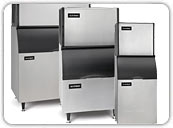
You are ready to buy an ice machine. You have lots of questions, and need help sorting though all the sizes, types, and styles available.
Remember an ice machine is a long term investment.
You need to choose an ice machine that will be able to supply all of your ice requirements as your business grows. Kirby is here to help you find the ice machine that is just right for you.
Let's start with the basics.
1.) What type of ice do you need?
There are three basic types of ice Cube ice, Flake ice, and Nugget Ice.
Cube Ice
The most common form of ice in the commercial industry. Eighty percent of restaurants choose ice machines that make cubed ice.
Cube ice is clear and comes in various shapes —rectangular, full cube, half cube, gourmet, contour, or other regular shapes. The largest dimension is about 1.25 inches (3.18 centimeters). Pieces of cube ice range in weight from 1/6 to 1/2 ounce (4.8 to 14.0 grams) and contain minimal amounts of liquid water.
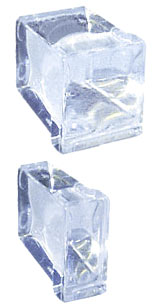
Full Cube or Half Cube
Shape- A unique “rhomboid”. Cube sizes and shapes are different for each manufacturer and are typically described as a modular half-cube or full-cube.
Advantages- It is slow melting and fills a glass better. This means more savings for you and a cooler, better quality drink for your customers.
Uses it for - Mixed Drinks, Carbonated dinks, Ice retailing, Salad bars, and Ice dispensing.
Full Cube and Half Cube ice is produced by all ICE-O-Matic Modular Head Cuber Ice Makers , most of the ICE-O-Matic Self Contained Undercounter Ice Machines, Scotsman Prodigy Ice Machines, Manitowoc Modular S-Series Cube Ice Makers, and Manitowoc Q Model Series Self Contained Cuber Ice Makers.
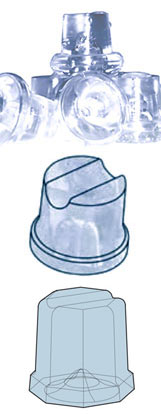 Gourmet Cube Gourmet Cube
Shape- Usually resemble a top hat or are shaped like a small shot glass.
Advantages- Size eliminates clumping and allows for easy filling of a glass. Easy to scoop, the hard slow melting cube makes them ideal for re-icing glasses. The distinctly attractive look, make it perfect for use in mixed drinks and gourmet drinks.
Uses for it- Bar use, Upscale restaurants, Banquet service, and Waitress stations.
The Gourmet Cube, top hat style ice, is produced only by the Hoshizaki AM Cuber Series Self-contained Ice Machines.
The Gourmet Cube, shot glass style ice, is produced by the ICE-O-Matic ICEU070A Undercounter Ice Machine and the Scotsman CU0515GA-1 Undercounter Ice Machine.
The Gourmet Cube, octagon style ice, is produced by the Manitowoc SM-50A Self Contained Cube Ice Maker,
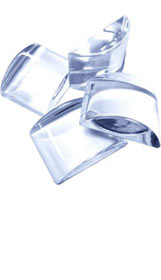 Contour Cube Contour Cube
Shape- Pillow shaped style ice. Full-dice: 1-3/8'' x 1-3/8'' x 5/8'' These patented, crystal clear, hard ice shapes are designed specifically for food service applications.
Advantages- Allows cubes to nestle in the glass for high displacement, which means better quality drinks for customers and more profit for you. The unique design eliminates splashing; liquid flows over the contour shapes smoothly and easily. Individually made so they are easier to handle and dispense.
Uses for it- Mixed Drinks, Ice Displays, Carbonated drinks, Ice retailing, Salad bars, and Ice dispensing.
Contour Cube ice is produced by all Hoshizaki Modular Head Cuber Ice Makers , and most of the Hoshizaki Self Contained Undercounter Ice Machines.
Flake Ice
Flaked ice is the most economical to produce and ideal for rapid cooling. Fills in around foods, unlike cubes that create warm air pockets that melt your ice. Generally used in cold pans or displays where ice need to be molded to the foods. Occasionally is it used in specialty drinks and soft drinks.
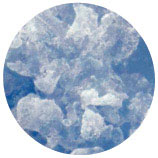 Shape- Small, hard bits of flaked ice. Chips or flakes that contain up to 20 percent liquid water. Shape- Small, hard bits of flaked ice. Chips or flakes that contain up to 20 percent liquid water.
Advantages- Preserves food for short periods. Conforms to the surface of items that it rests on. Gives customers a perception of freshness. Great for icing down seafood or chickens in your kitchen prep area.
Uses it for - Produce, Seafood, or Meat Displays, Blended Cocktails, Fishing Boats, Salad Bars, and Hospitals.
Flake ice is produced by all ICE-O-Matic Modular Head Flaker Ice Makers , and the ICE-O-Matic Self Contained Undercounter Flake Ice Machines., Scotsman Undercounter Flakers, and Scotsman Flaked Ice Machines with AutoSentry .
Nugget Ice
Ice nuggets are an increasingly popular option. Consumer preferred, this new and exciting ice is very cost effective. It uses less water and electricity than cubed ice, and it melts slower than flaked ice. Popular for use in dinks with fast food restaurants, such as Sonic.
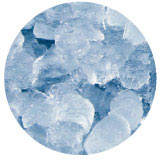 Shape- Hard, cylindrical, randomly sized bits of ice are actually flaked ice in compacted form. Not as crystal-clear as cube ice. Shape- Hard, cylindrical, randomly sized bits of ice are actually flaked ice in compacted form. Not as crystal-clear as cube ice.
Advantages- Easy to chew. No wasteful foaming, perfect for cooling and maintaining the flavor of drinks. Ice doesn't stick together and stays free flowing. Displays look crisp and stay fresh longer. Requires less work to re-ice displays. Machines
are a bit more compact and are said to require less maintenance.
Uses for it- Carbonated dinks, Blended Cocktails, Produce, Seafood, or Meat Displays, Ice Dispensing, Salad Bars, and Hospitals.
Nugget ice is produced by all ICE-O-Matic Pearl Ice Modular Head Nugget Ice Makers, Scotsman Nugget Modular Head Ice Makers.
Too many choices? Can't decide which is right for you?
Keep these questions in mind:
• What do your customers want and expect in their drinks?
• What kind of image and personality is your business trying to project?
• Do you need ice in the kitchen or other areas that won't be used in drinks?
Ice type decided, next question...

2.) What type of ice machine do you need?
There are two types of ice machines Modular Ice Machines and Self-Contained Ice Machines.
Modular Ice Machines - Head Units with Storage Bins
The most common and widely used.
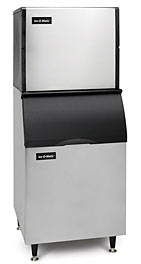
A Modular ice machine is composed of an ice-making head and separate ice storage bin.
Head Units
The head unit is a standard ice maker and condensing unit. Condensers can be air-cooled, water-cooled or, remote-cooled. It can produce a range of 300 to 2400 lbs of ice per 24 hrs. Available in a variety of sizes and ice types, it allows you to design an machine to fit your ice production and storage requirements.
Storage Bins
Storage Bin capacity ranges of 200 to 2000 lbs. It is important to choose a bin that will hold enough ice on your peak business days, but won't overflow during downtime.
Instead of a bin modular heads can also be place on a ice dispenser.
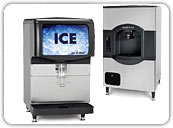 Ice Dispensers Ice Dispensers
Ice dispensers are used in self-serve situations. They eliminate the labor needed to fill bins manually while guaranteeing that customers have ice available to them during service periods. Ice dispensers can store from 150 lbs. to 250 lbs. of ice.
Hotel dispensers, are larger ice-production systems specially designed to dispense ice directly into buckets. Hotel dispensers can store up to 180 lbs of ice.
Learn more about ice dispensers
Self-Contained Ice Machines
A real space saver.Perfect for a small bar, cafe, or kitchen.
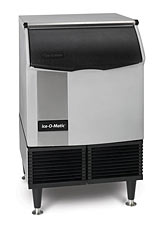
A self-contained ice machine is the ice maker and storage bin in one compact unit. It is also called an undercounter ice machine.
They will fit in small spaces, under bar installations, or under most 40" counters in a kitchen. Under counter ice machines come in many sizes, but lack the storage capacity of modular ice machines.
Not sure which is right for you?
Think about how much ice you need and the space you have for a machine.
• A modular ice machine would work better for a large restaurant, with lots of thirsty customers.
• A self-contained ice machine would be perfect for small bar or cafe.
You have chosen a machine type, now you need to choose your condenser...
Air Cooled vs Water Cooled.

3.) What type of condenser should I buy?
Air-Cooled vs Water -Cooled Ice Makers
The choice of an air-cooled or water-cooled machine is an important one. The first thing to consider is the environment where your ice machine will be located. Temperature and air circulation, effects your ice machine's performance and efficiency.
Air-Cooled
An air-cooled ice maker is more affordable, and can be installed anywhere you have access to water and electricity. The down side is they use more energy, can exhaust significant amounts of heat, and are too noisy to be located close to customer service areas.
Air-cooled ice makers should not be used in a small room without air circulation. It needs to have 6” of clearance on all air intake and discharge areas. As a rule of thumb, a 10°F air temperature increase may reduce daily ice production by 10% when using an air-cooled machine. It is not recommend for small kitchens where the ice machine must be located near the cooking equipment and air temperatures are typically over 80F. The increased room temperature will melt ice in the bin quicker, requiring more ice-making capacity to replenish and fill the bin.
Water-Cooled
A water-cooled ice maker generates less heat, uses less electricity, and is quieter than air-cooled machines. Water-cooled units are more efficient than air-cooled units and great for environments where high water and ambient air temperatures would virtually shut down an air cooled machine.
The problem is that these machines are not allowed in certain areas because of the cost of the water. In most areas, water-cooled machines must be on a closed loop systems, meaning no water can be dumped down a drain. A closed loop and cooling tower may or may not be feasible in a smaller restaurant.
Generally, a water-cooled unit should only be chosen if one or more of the following conditions exists where the machine will be installed:
• Ambient air temperatures of more than 80°F
• Air contains a high level of contaminants such as grease
• A lack of air circulation
Remote-Cooled Ice Makers
Remote ice makers are quieter than typical machines because some of the machinery has been relocated. Remote air-cooled ice makers require the purchase of a separate remote condenser.
The condenser can be located up to about 50 feet away, including the roof. Installation costs can be higher than for self-contained machines, due to running refrigeration lines to a remote location.
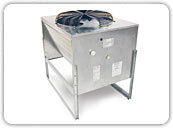 Remote Condensers Remote Condensers
Designed for use with remote-cooled ice makers
Remote condensers allow quiet operation and provides energy savings.The remote unit takes the biggest heat-producing component, the condenser, out of the ice maker and your kitchen altogether. The remote approach does not require water and removes most of the heat from the service area.
The Bottom Line
Air-cooled ice makers use the most energy—5.4 to 22.5 kWh per 100 pounds of ice—but cost
less than water-cooled models and use less water.
Water-cooled ice makers are more efficient than air-cooled units, using 4.7 to 14.2 kWh per 100
pounds of ice. The heat removed in making the ice is discharged outside the building, so air-conditioning costs are not affected.
Remote air-cooled condensers transfer heat generated by the ice making process outside of
the building. Like water-cooled units, they reject heat outside of conditioned spaces and, therefore, do not increase air conditioning loads. They also reduce noise levels inside by up to 75 percent, but there are extra installation costs for running lines to a remote location.
Next question...

4.) What size ice machine do you need?
This can be a difficult question to answer. Every business or operation has different ice needs. Those needs change daily and seasonally. You don't want too have too much ice or run out during peak hours. To prevent that from happening ask yourself this...
How much ice do I really need?
Add up your ice usage for the front and back of the house. Does the existing ICE Maker meet peak usage during the hottest part of the year?
If you are a new operation here are some general ice usage guidelines to help you calculate your needs.
Ice Usage Chart
| RESTAURANT |
1.5 lbs. per person |
| COCKTAIL |
3 lbs. per person / seat |
| SALAD BAR |
40 lbs. per cubic foot |
| QUICK SERVICE |
5 oz. per 7-10 oz. drink |
| |
8 oz. per 12-16 oz. drink |
| |
12 oz. per 18-24 oz. drink |
| GUEST ICE |
5 lbs. per room |
| RESTAURANT |
1.5 lbs. per person |
| COCKTAIL |
3 lbs. per person / seat |
| CATERING |
1 lb. per person |
| PATIENT ICE |
10 lbs. per bed |
| CAFETERIA |
1 lb. per person |
| BEVERAGE |
6 oz. per 12 oz. drink |
| |
10 oz. per 20 oz. drink |
| |
16 oz. per 32 oz. drink |
| COLD PLATE |
50% more ICE usage per day |
| PACKAGED ICE |
Weight per bag x number of bags sold per day |
Remember you may want to add 10-20% to your estimate to allow for future growth, and other types of ice usage. For example ice for beverage service and for keeping food chilled.

5.) What size storage bin do you need?
Ice Storage Bins offer multiple sizes and storage capacities to fit the most demanding application needs.
When choosing your bin consider the following:
• Weekends are generally busier than weekdays.
• Seasons (During the summer you will probably use more ice than the winter)
• Peak hours will use more ice than other times during the day.
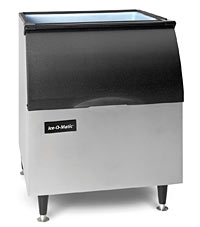
It is important to choose a bin that will hold enough ice on your peak business days, but won't overflow during downtime.
If you run out of ice during peak hours, your bin is definitely too small.
If your bin is always full, your ice is melting, your bin is definitely too large.
Bins are usually sized to hold 10 to 12 hours worth of ice production. Larger bins should be used for such applications as supermarket displays for which ice is only changed once or twice a week.

6.) How much ice will my machine really produce?
The specification sheets from manufacturers list the pounds of ice produced per 24hrs.
This number is not always accurate. Manufacturers usually list the ice produced in ideal conditions of 70° F Air and 50° F Water.
Be sure to look at the ARI (Air-conditioning and Refrigerating Institute) rating before purchasing an ice machine. The ARI laboratories use conditions of 90°F Air and 70° F Water to test ice machines. These conditions are similar to the environment that would be found in a restaurant kitchen.
At Kirby we list both the "ideal" conditions and ARI rating for your convience. Look for the Ice Production chart on the ice machines pages.
ICE Production per 24 hrs
| Unit |
70° Air / 50° Water |
90° Air / 70° Water |
| Air Cooled |
625lbs |
461lbs |
| Water Cooled |
567 lbs |
499 lbs |

7.) What accessories do I need for my ice machine?
The
most important thing you can do to
keep your ice machine running
smoothly and extend the life
of service is to...

KEEP
IT CLEAN
It is also prudent to use dedicated containers, scoops and utensils to prevent germs from being transmitted by careless
handling practices. Water filters provide protection against unpleasant tastes, odors, sediment and scale formation.
Remember ice is legally considered food and is subject to strict hygiene legislation just as food is.
Cleanliness of the machine is very important and manufacturers‘ cleaning routines should always be followed.
Learn More about Ice Safety Guidelines and How to Clean Your Ice Machine .

8.) What preparation is needed before I can install my ice machine?
Before you buy your need check a few things.
1) Will your ice machine fit through the door?
It is important is to measure the doors and hallways to make sure your ice machine will fit.
Be sure to check and double check, that your ice machine will fit vertically and horizontally in the space you are purchasing it for. Allow space for the ice maker, storage bin, and water filter.
The ice machine needs to have 5 to 8 inches of space around it for proper air flow on the top, back and sides. If the space is too small you might want to consider a top air discharge unit.
2) Is it close to an electrical outlet and a plumbing hookup?
Check to make sure that your electrical connections, water source, and floor drain within are 6 feet of your ice machine.

3) Do you have the right power supply?
There are ice machines that can be powered by standard electrical outlets, but some ice machines require more power. When you order, verify that the ice machine is the correct voltage for your set up. You may have to consult an electrican, to confirm your ability to operate the ice machine properly.

4) Is there enough plumbing for your machine?
Ice machines need to be connected to a cold water supply with a shut off valve. You will also need separate drain lines for the ice making head and the storage bin. Don't forget the required floor drain.
5) Are your connections up to code?
All local, state and national code requirements are different. It is important to make sure that your electrical and water connections are not in violation of the codes.

6) Are you purchasing a Remote Condenser?
If so, consider these questions:
• Is there an outdoor condenser location above the ICE Maker?
• Is there easy roof access and penetration?
• Do you have maximum pre-charged tubing lines?
Answering these simple questions beforehand, will make the purchase and installation of your ice machine a much easier process.

If you have answered all these questions...you are ready to start shopping.
Are you looking for a specific Brand or Manufacturer?
Kirby has a variety of commercial ice makers and other ice machine equipment available online from Hoshizaki, Ice-O-Matic , Manitowoc, or Scotsman .
If you have any questions about ice machines that aren't answered here give us a call.
Our salesmen are ready to help you answer any questions you may still have, to find the right ice machine for your operation.
|






 Shape-
Shape- 









